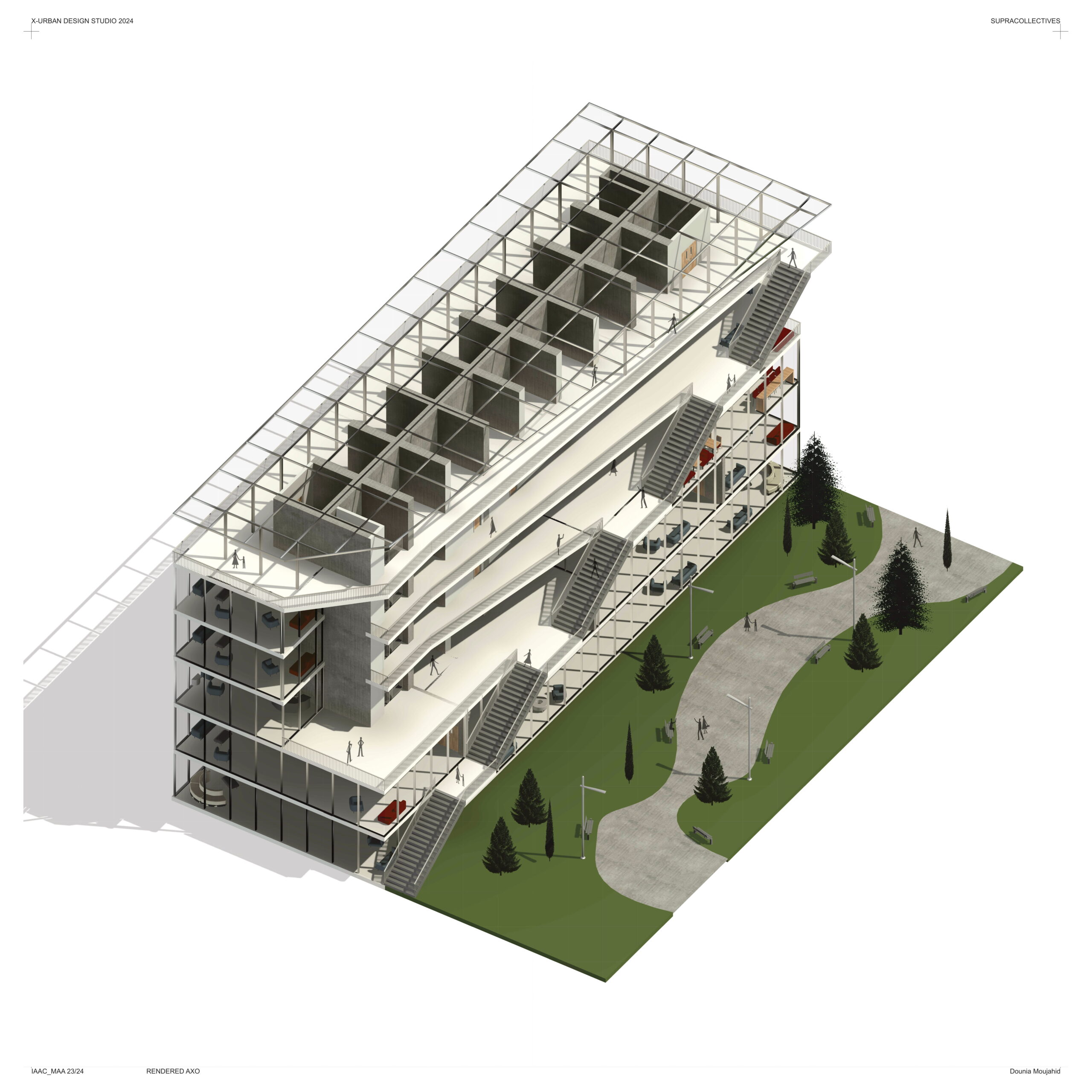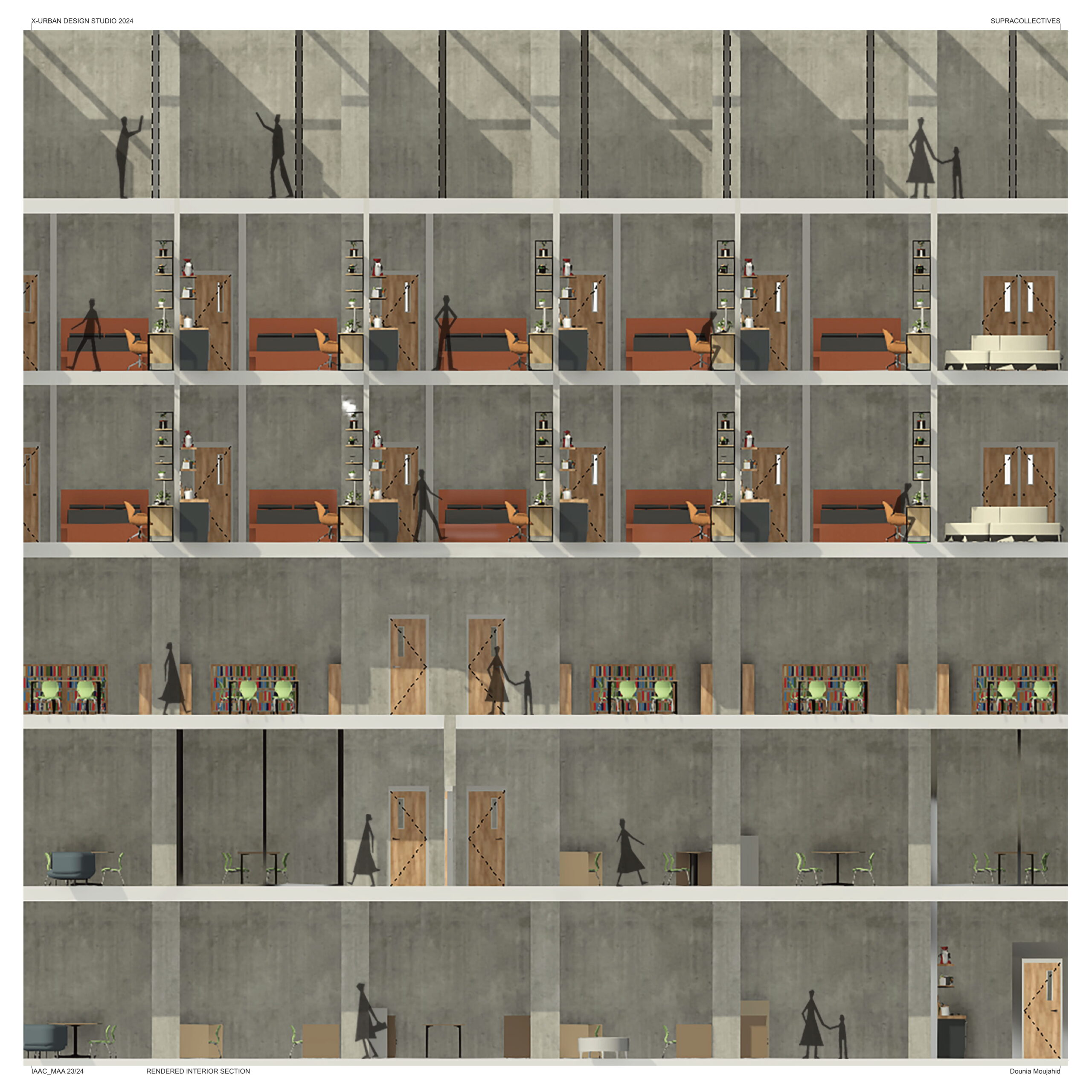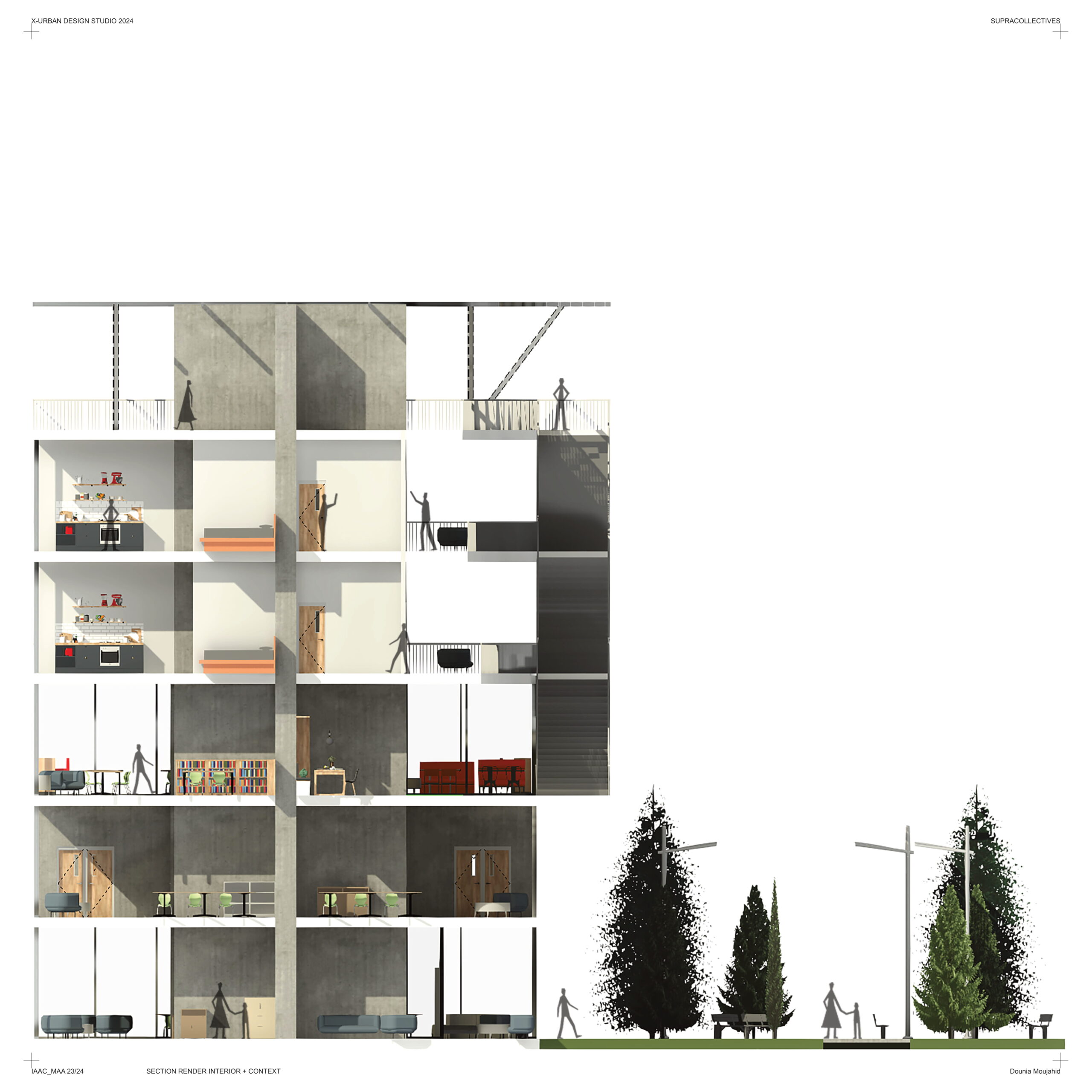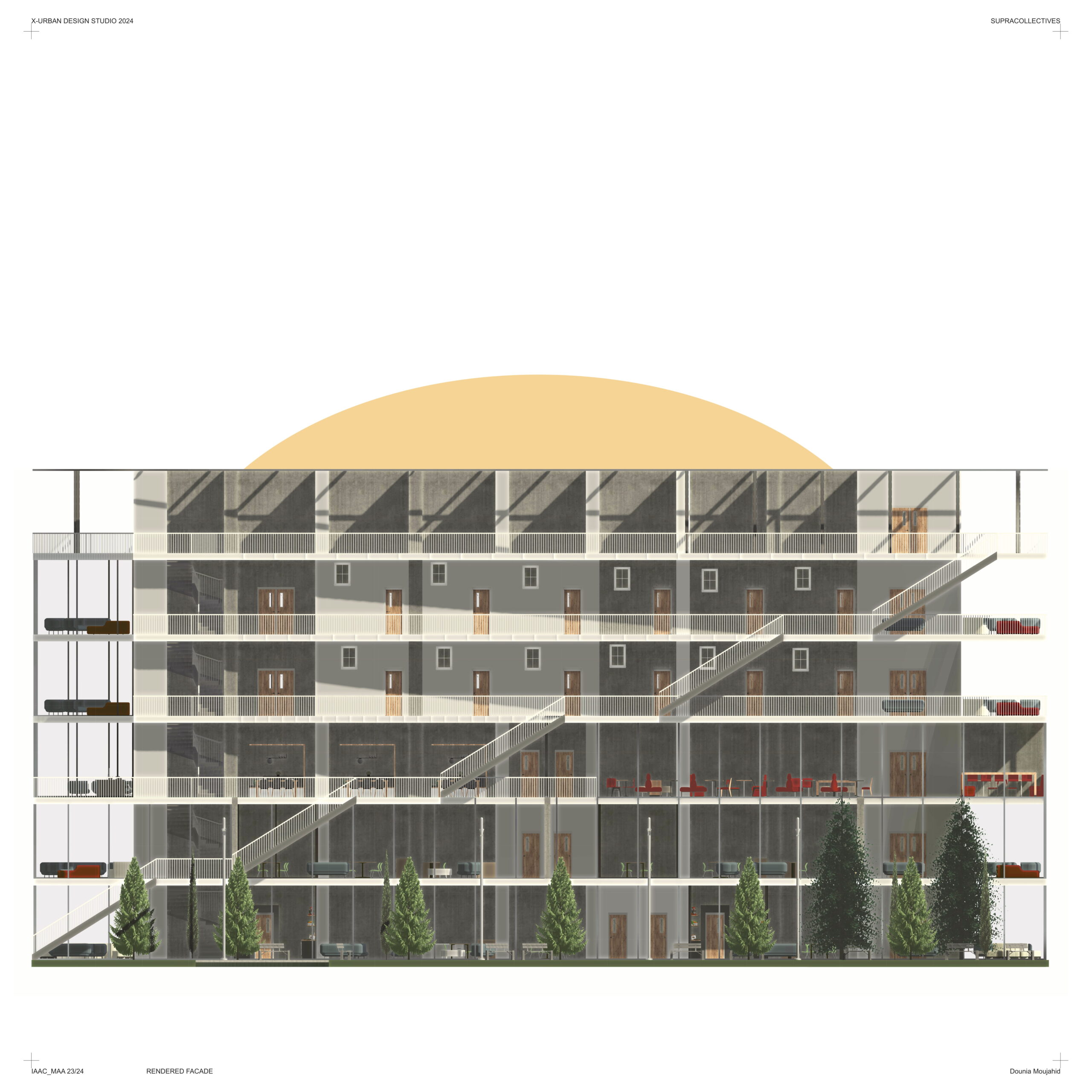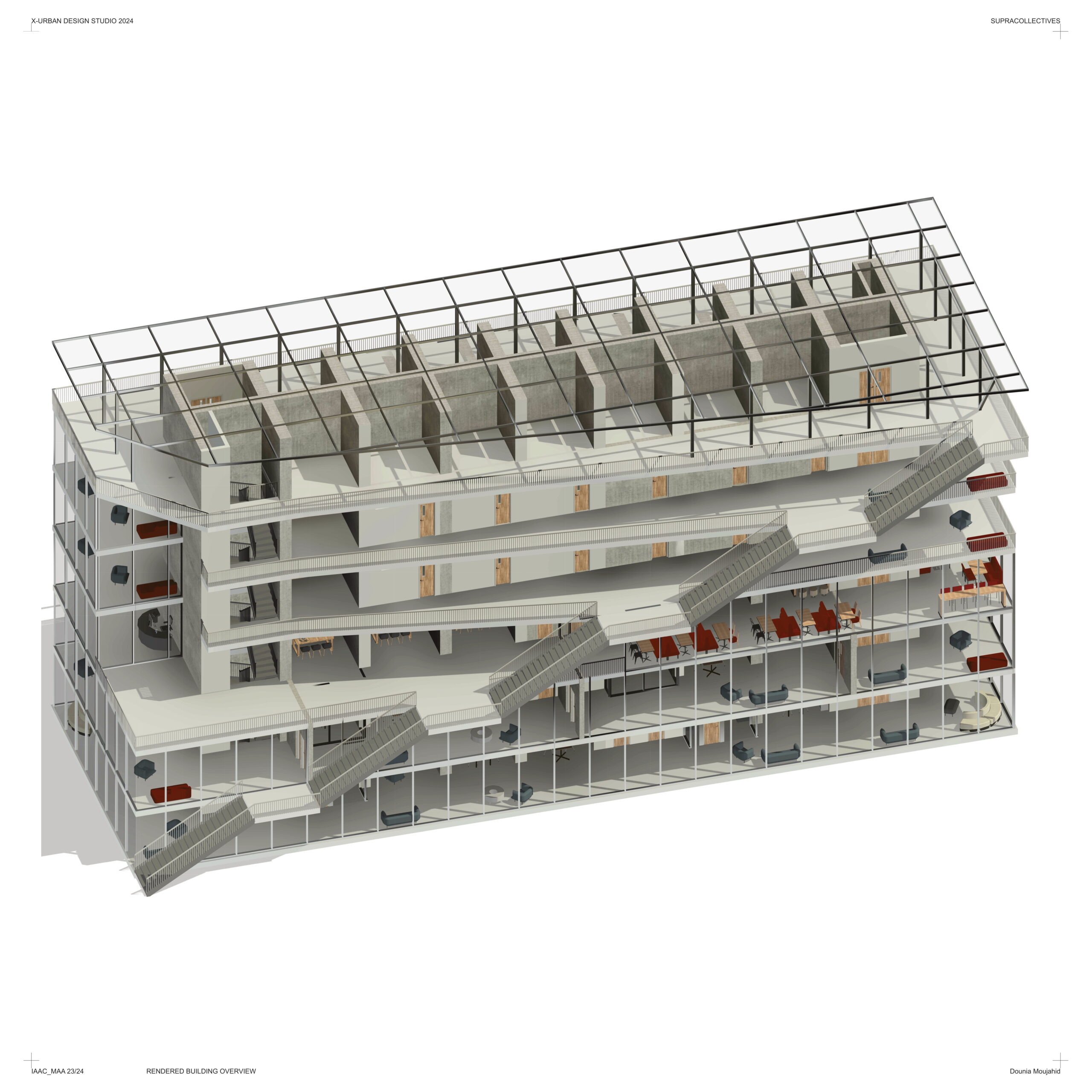The selected elements from my catalog serve as the foundation for this exploration, culminating in a volumetric design that integrates various features. Key characteristics include a facade excavation for natural airflow, an exposed staircase spanning the building’s length, and a core ‘fish bone’ structure, reminiscent of the Pedregulho Housing Complex, enclosed by a curtain glass wall. This structural spine, visible throughout all six floors, supports spaces for housing, catering, offices, and amenities such as a library and shared kitchens for workshops.
The smallest unit within this framework is a 24m² rectangular studio, optimized for space and comfort, inspired by Le Corbusier’s ‘Modulor’ principles of human-scale living. These units feature bay windows (minimum dimensions: 3.66 x 2.26 m), a ceiling height of 3.66 m, a width of 3 m, and a length of 5 m.
The design’s flexibility is a core feature, allowing the internal layout to adapt to various functions and changing needs, such as different times of day, seasons, and economic conditions. This adaptability ensures that the building can serve multiple purposes over time, supporting a dynamic and evolving community.
Inspired by the diversity of the Tempelhof masterplan, the project aims to create a smaller-scale ecosystem. The bar is envisioned not just as a building, but as a living organism, providing essential resources like infrastructure, sunlight, safety, space, and a sense of community. This holistic approach fosters a thriving environment, enabling the structure to evolve through a process of natural selection, where effective elements are retained and less effective ones are adapted or discarded, leading to the self-actualization of the space by its inhabitants.
Catalogs
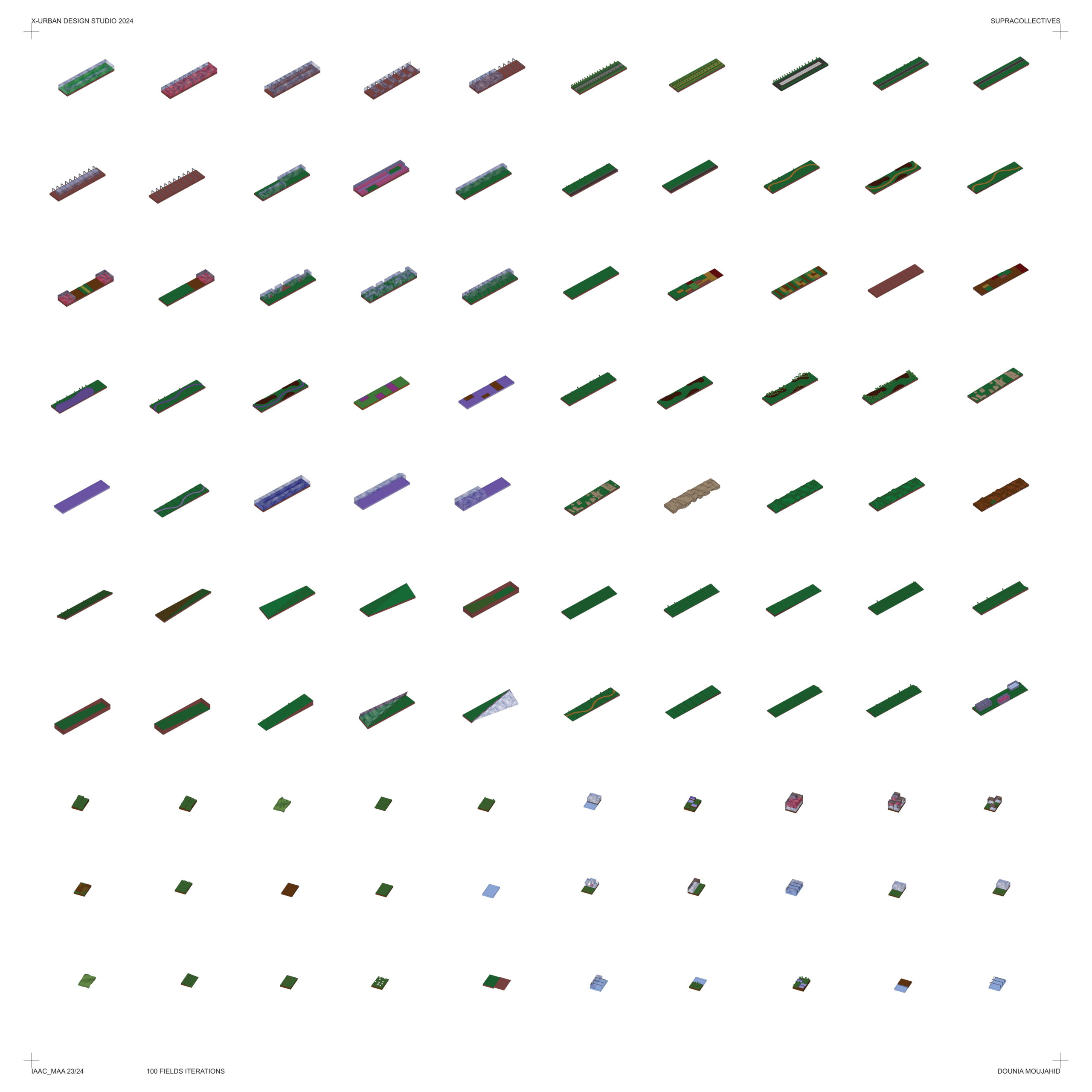
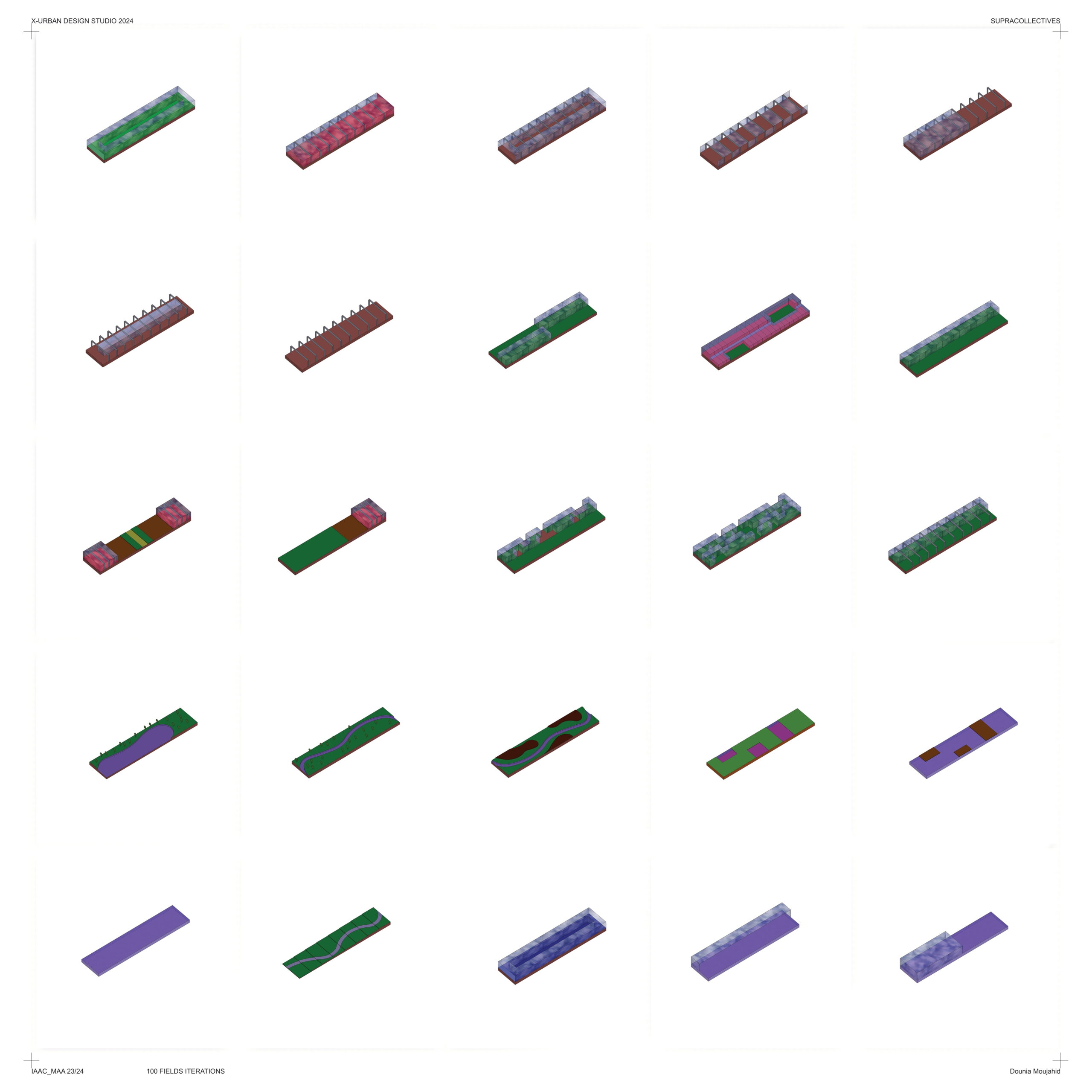
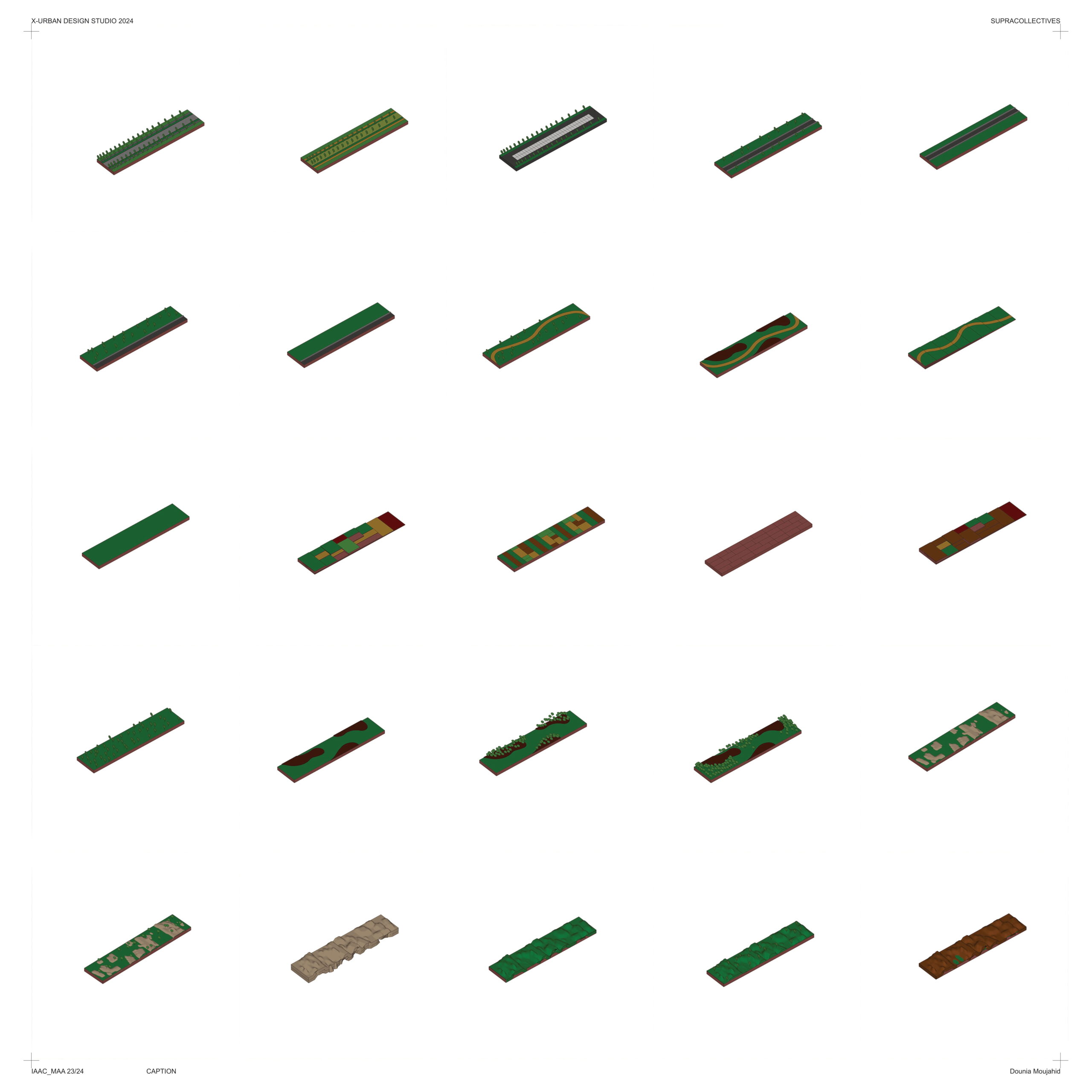
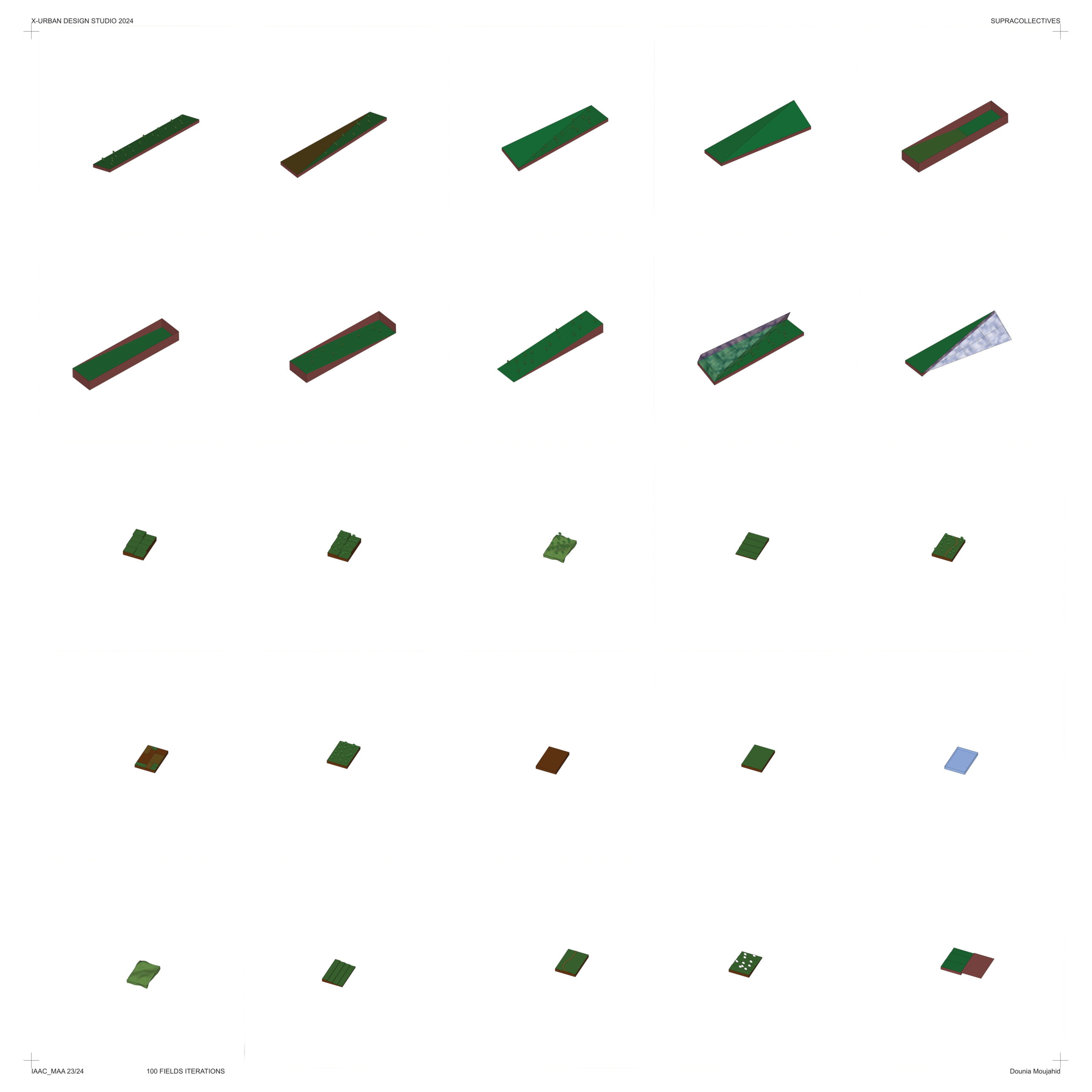
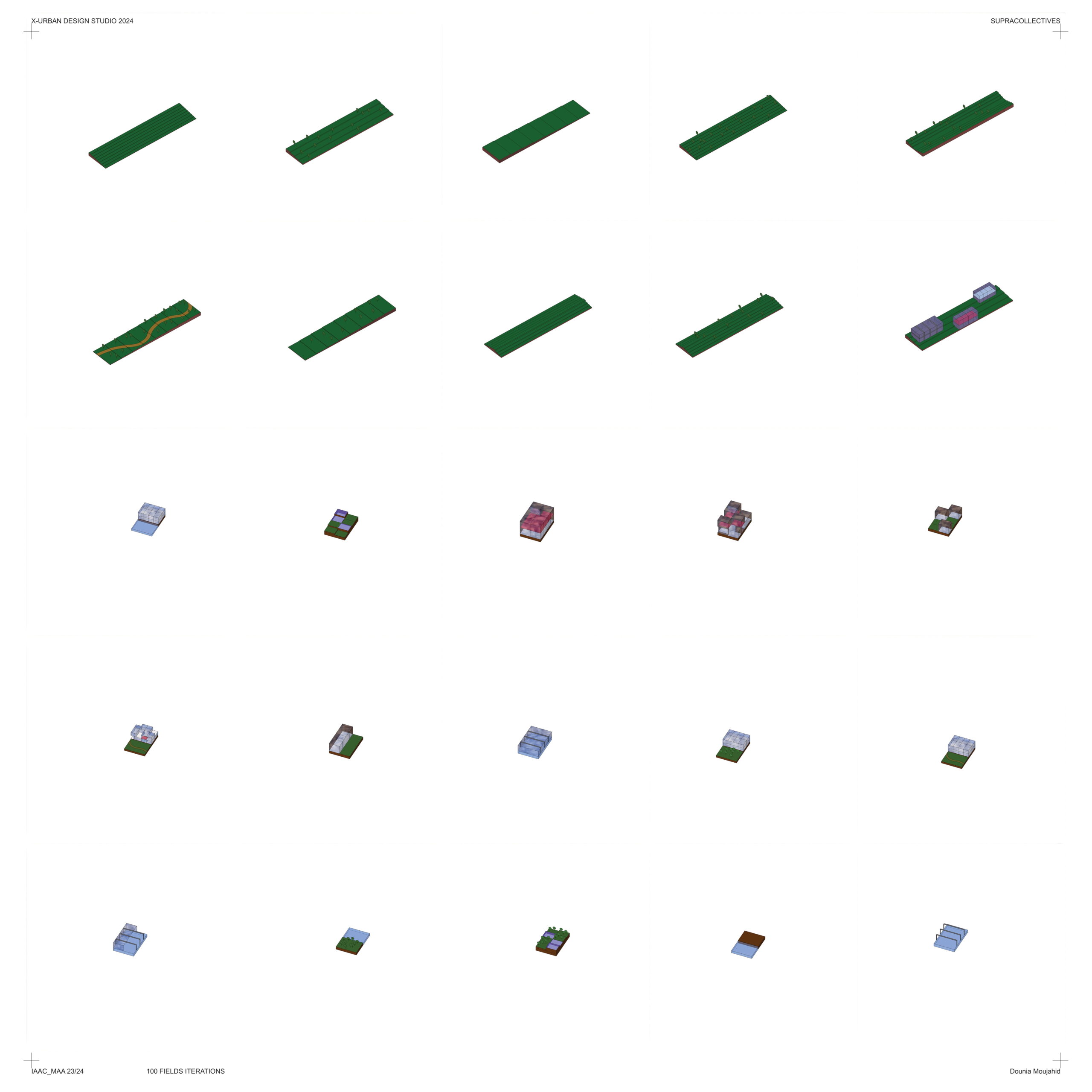
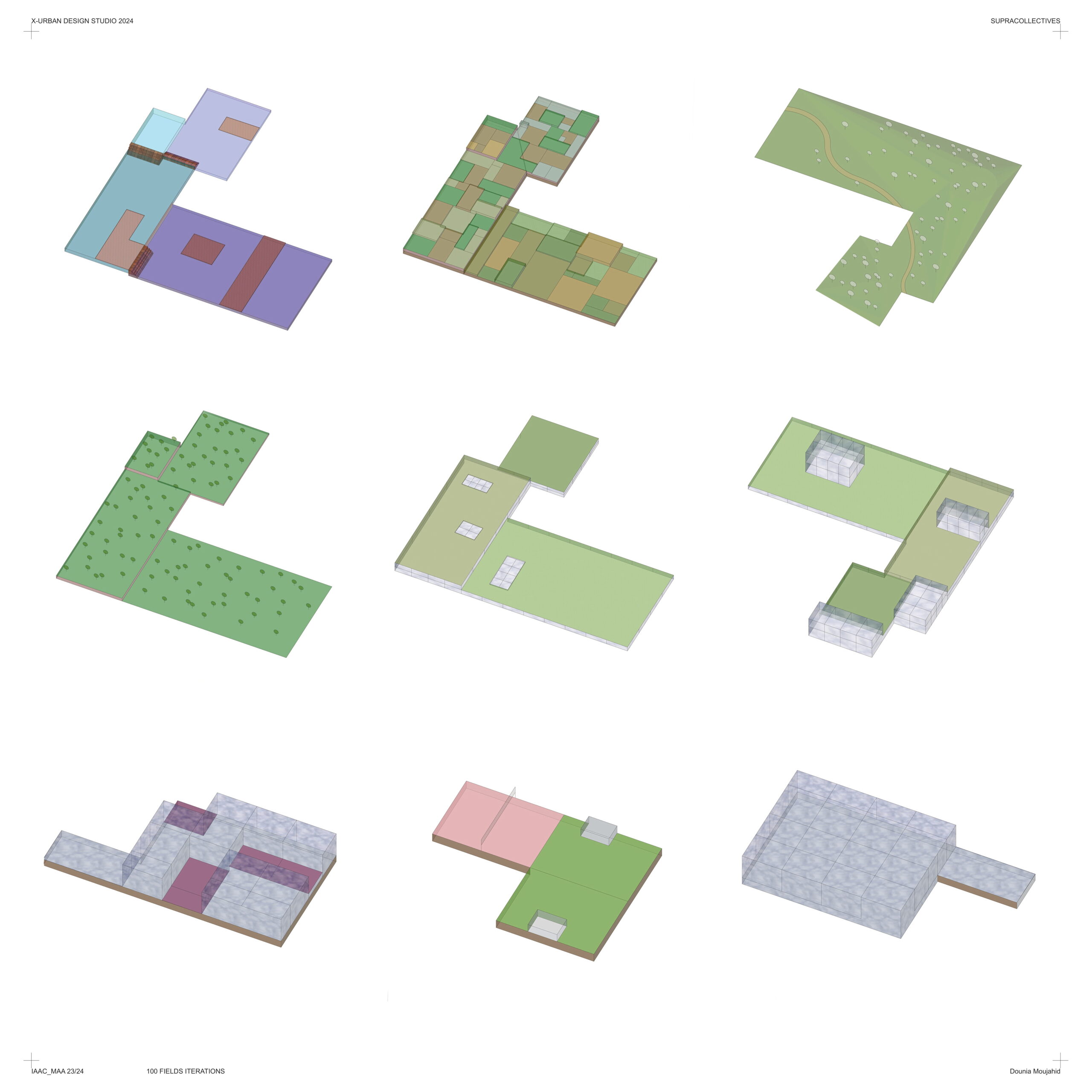
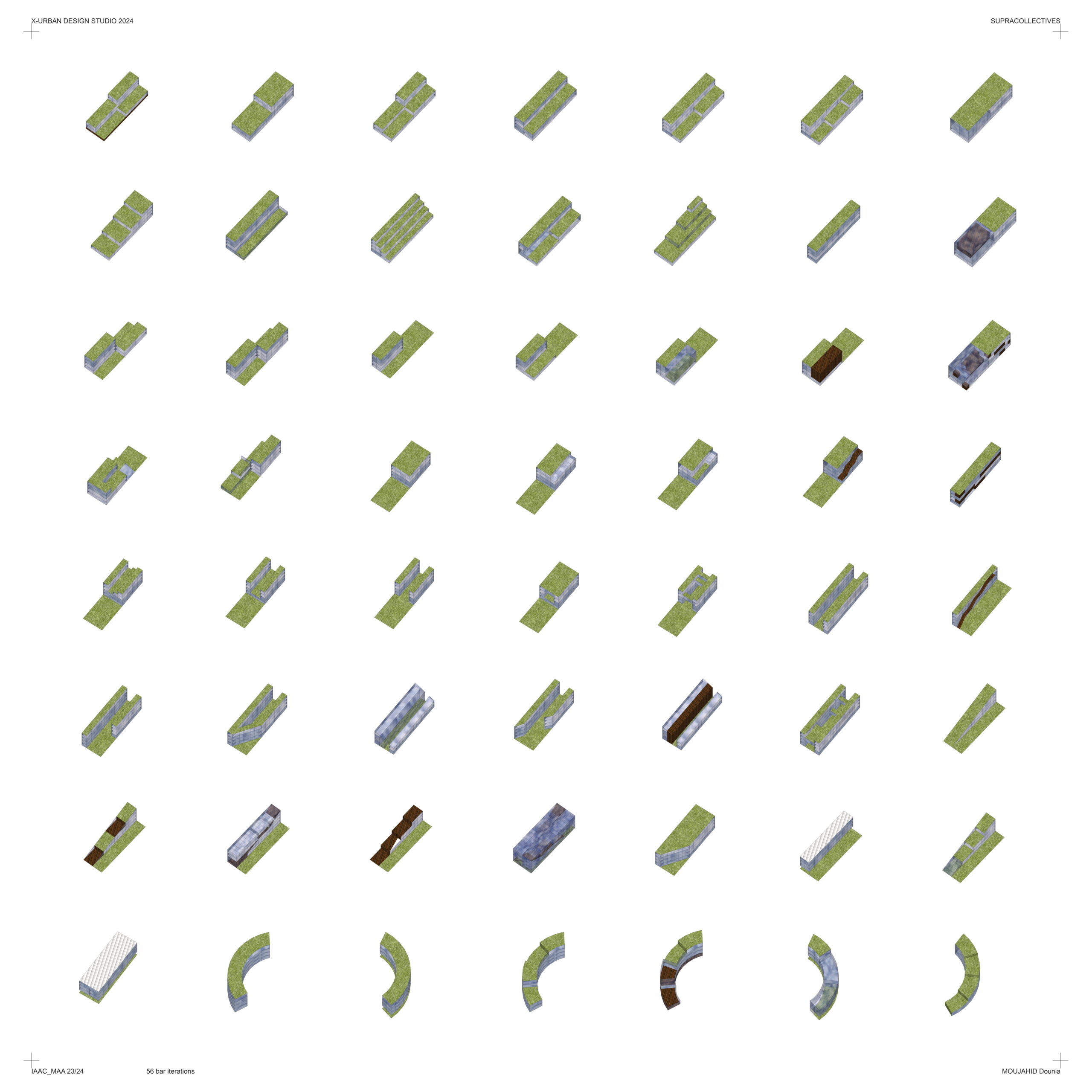
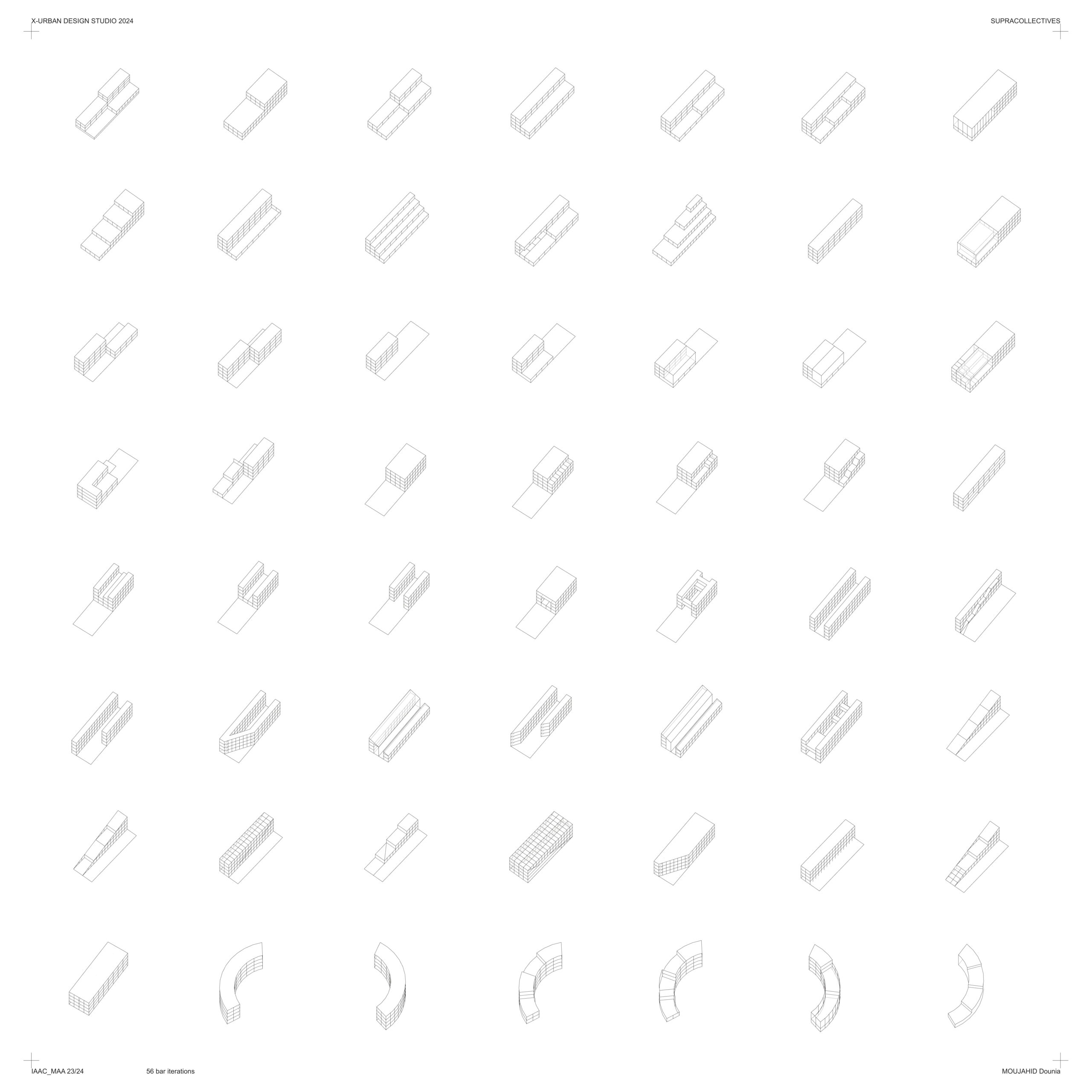
Axos
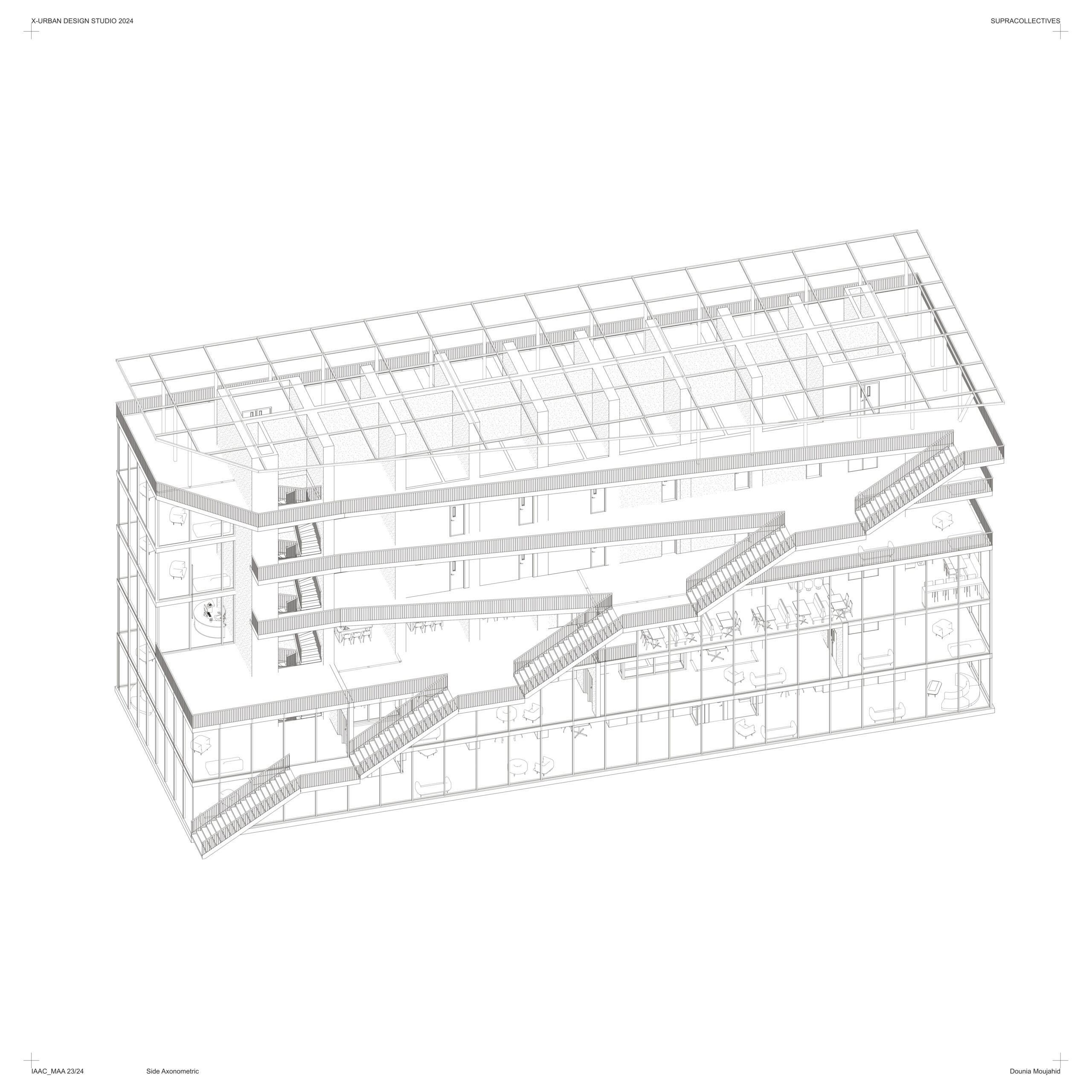
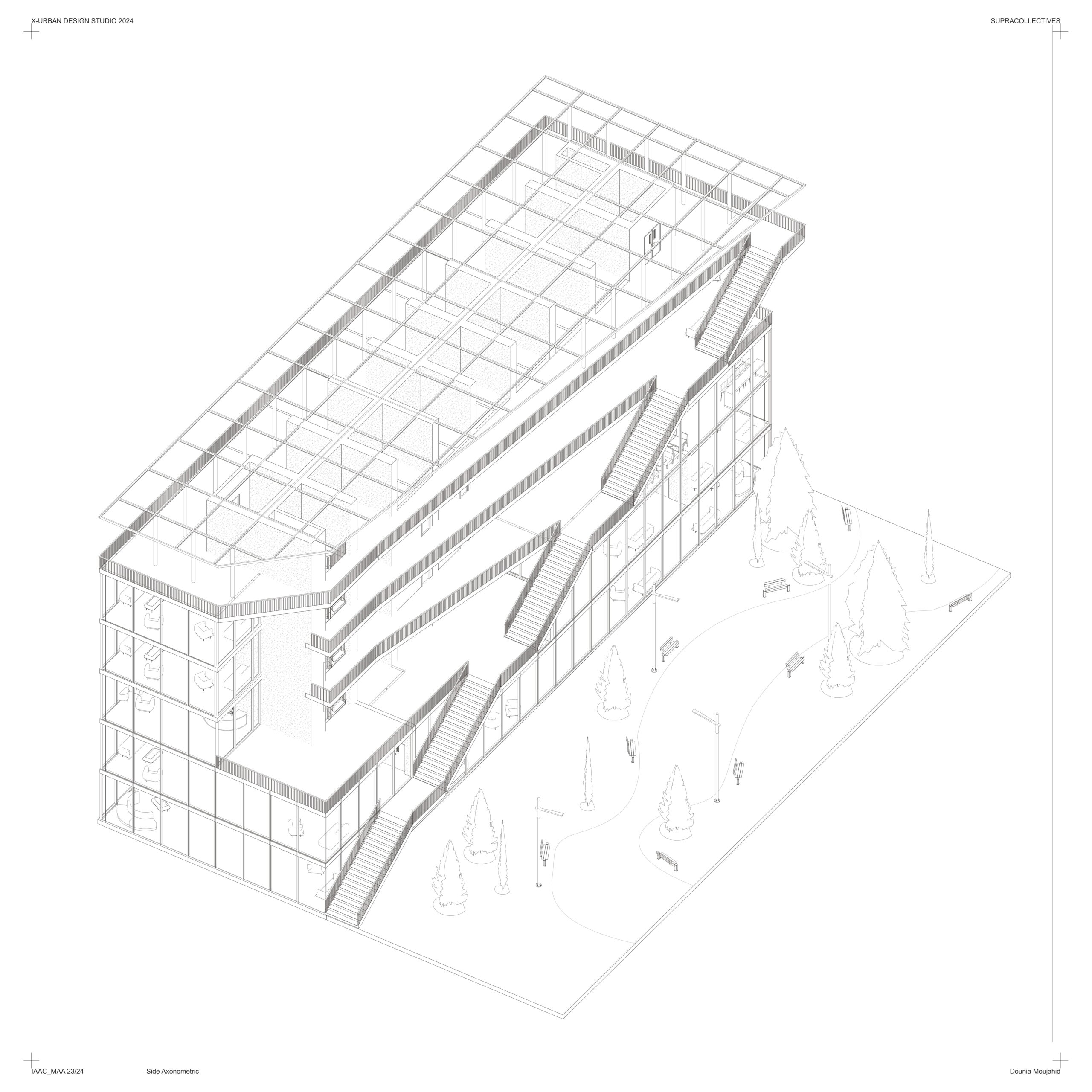
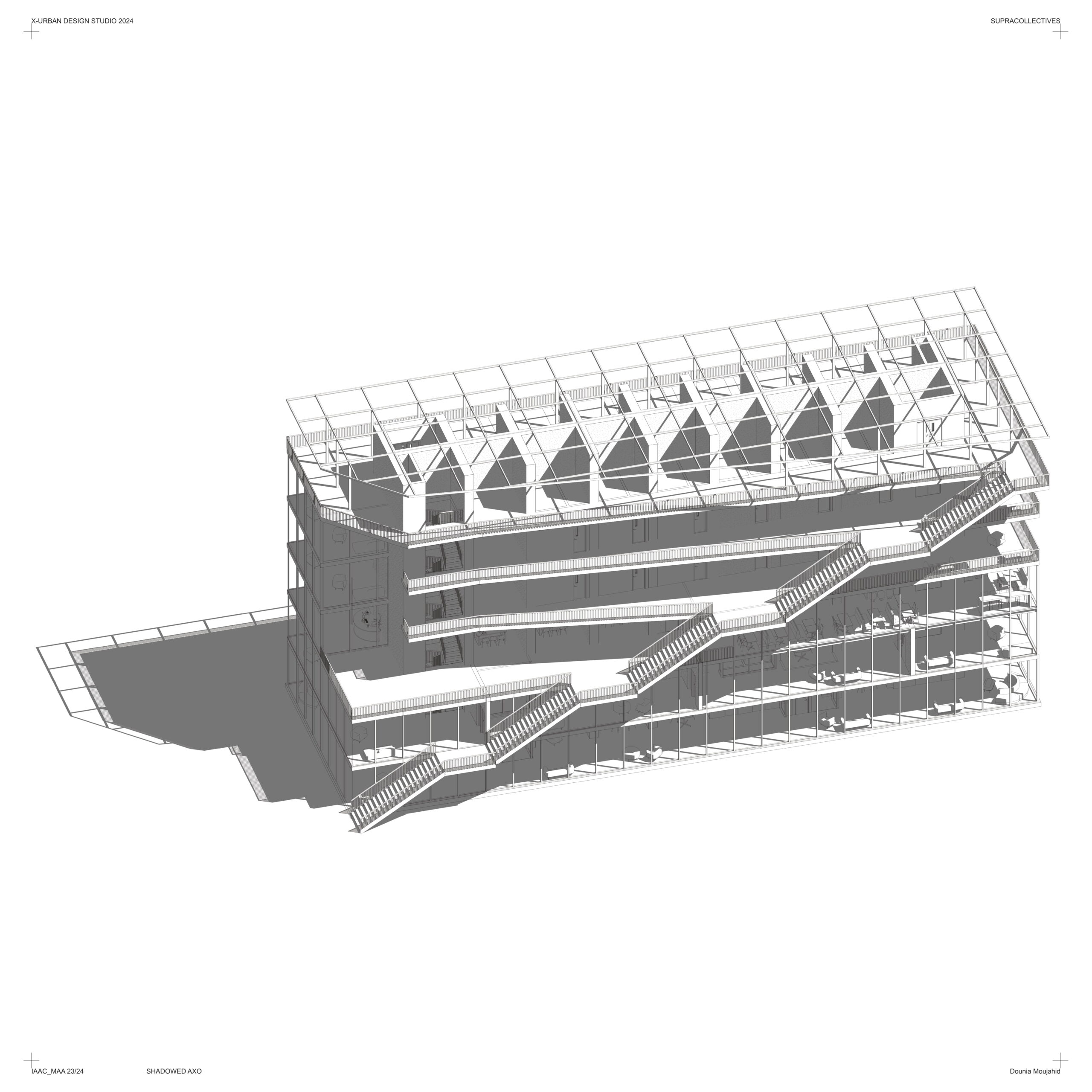
Plans
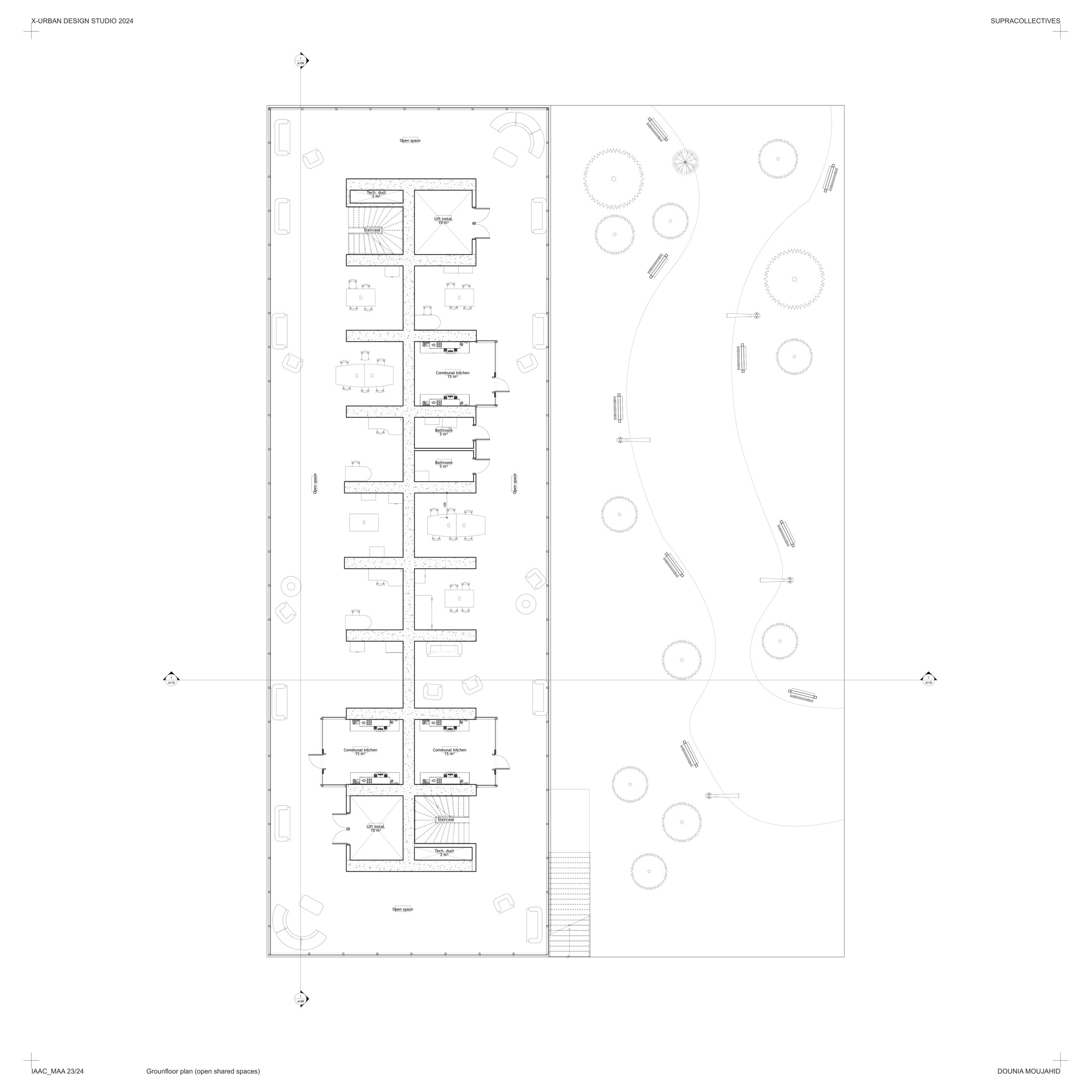
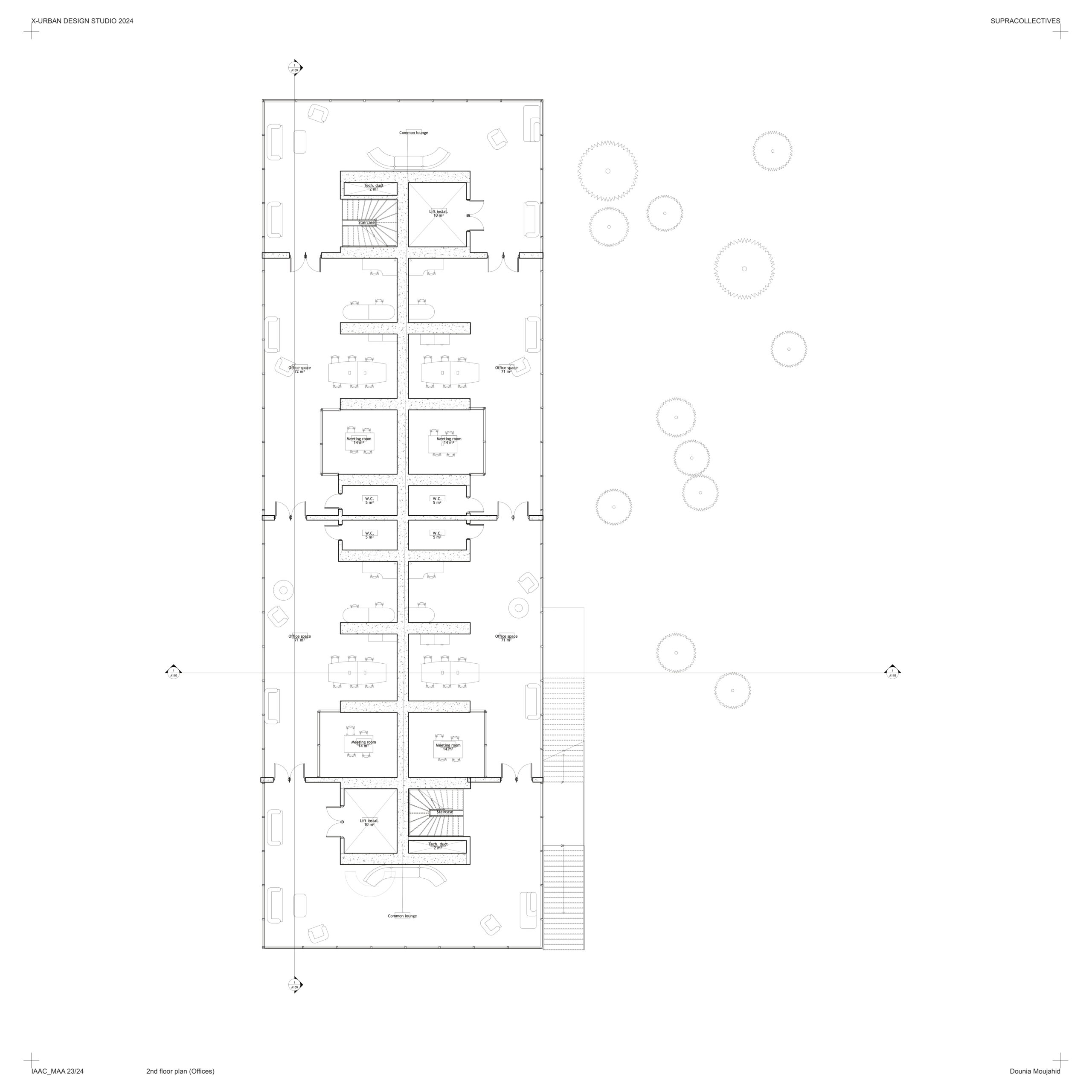
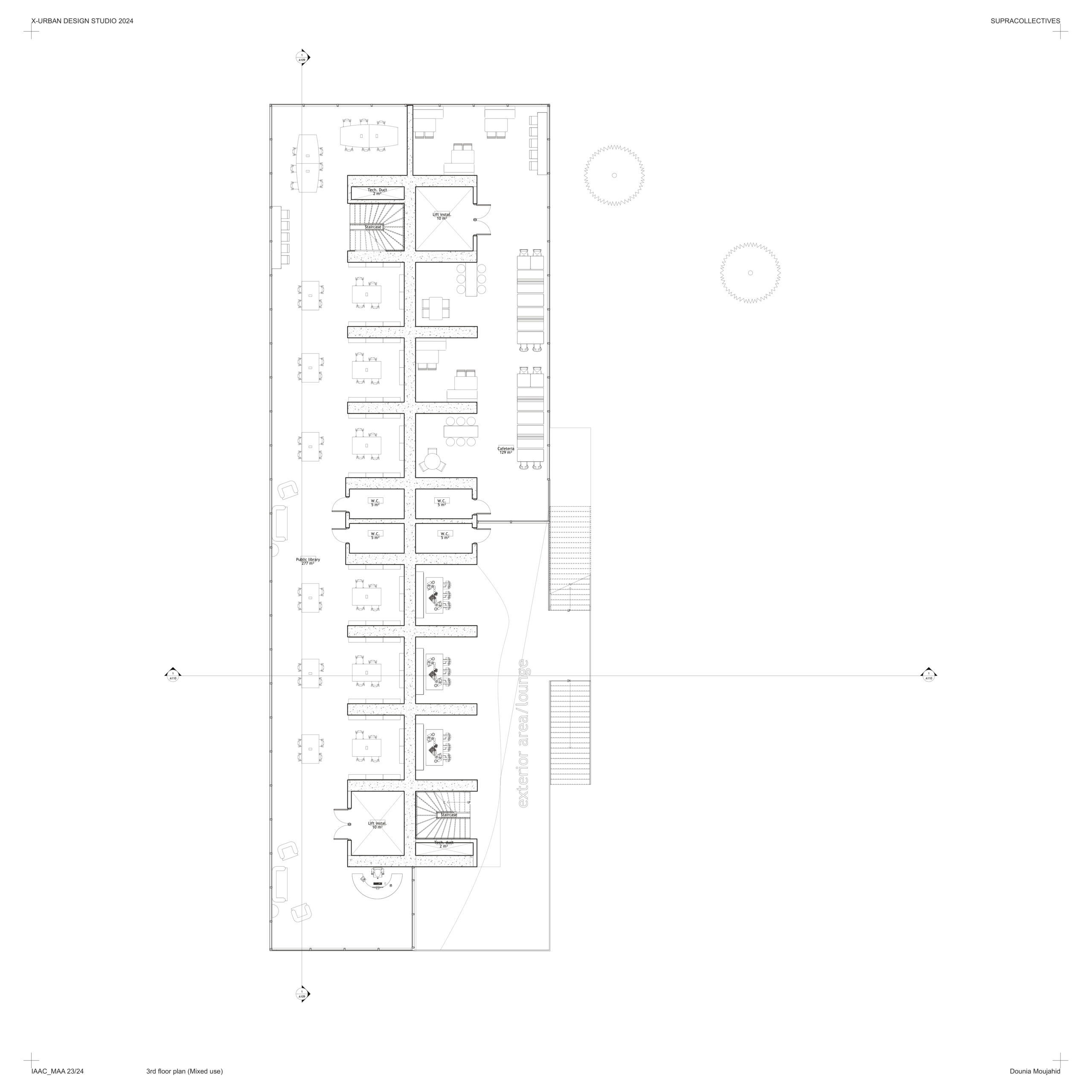
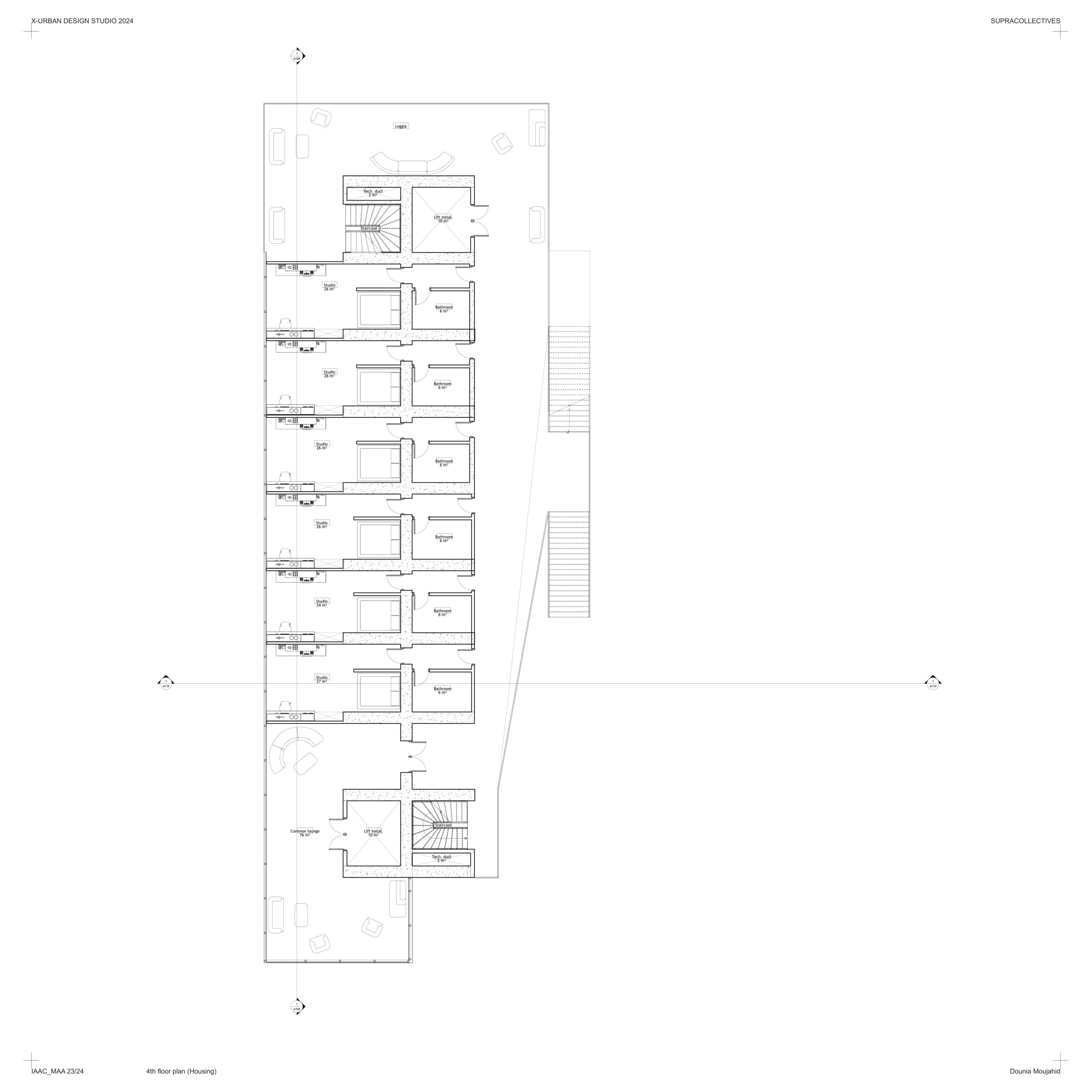
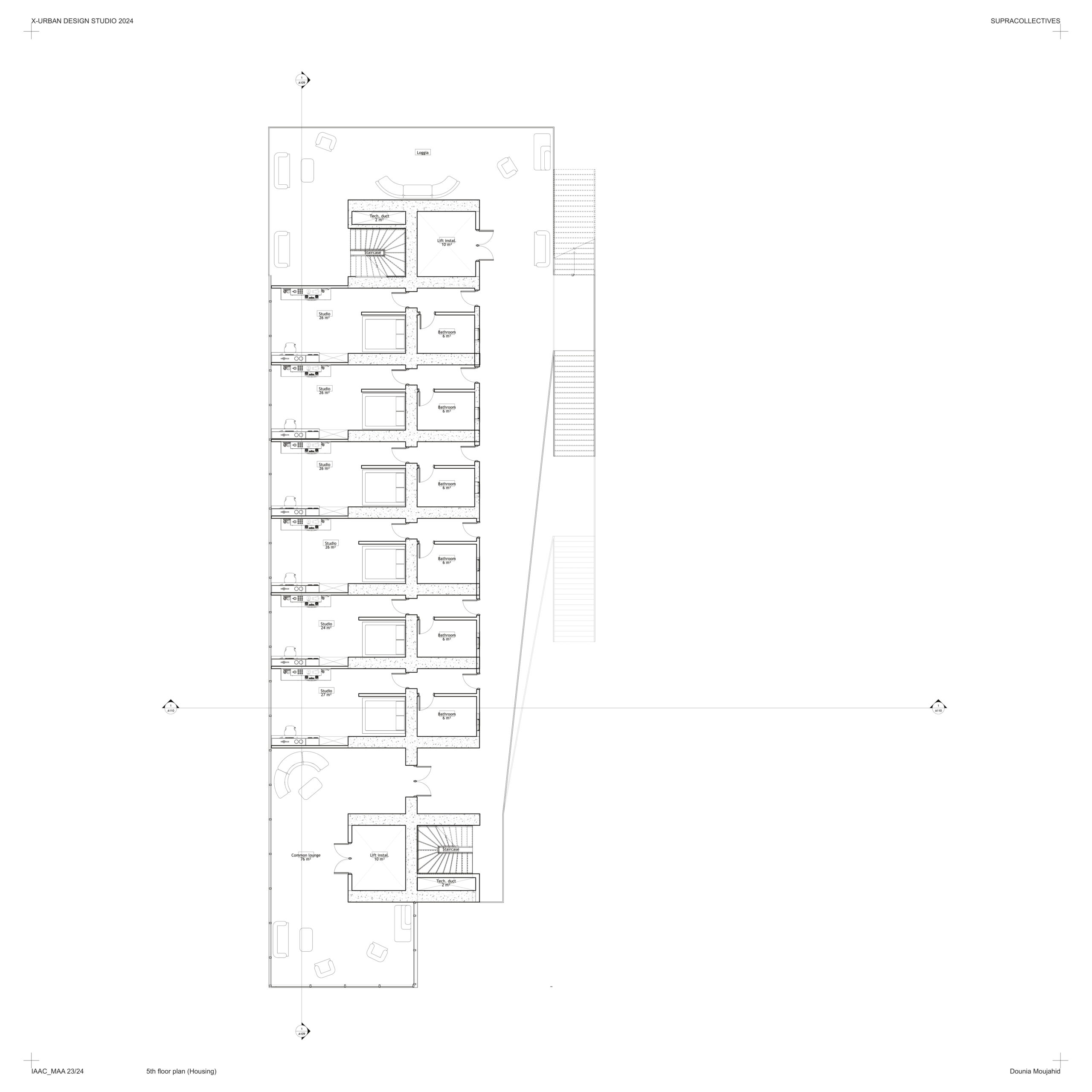
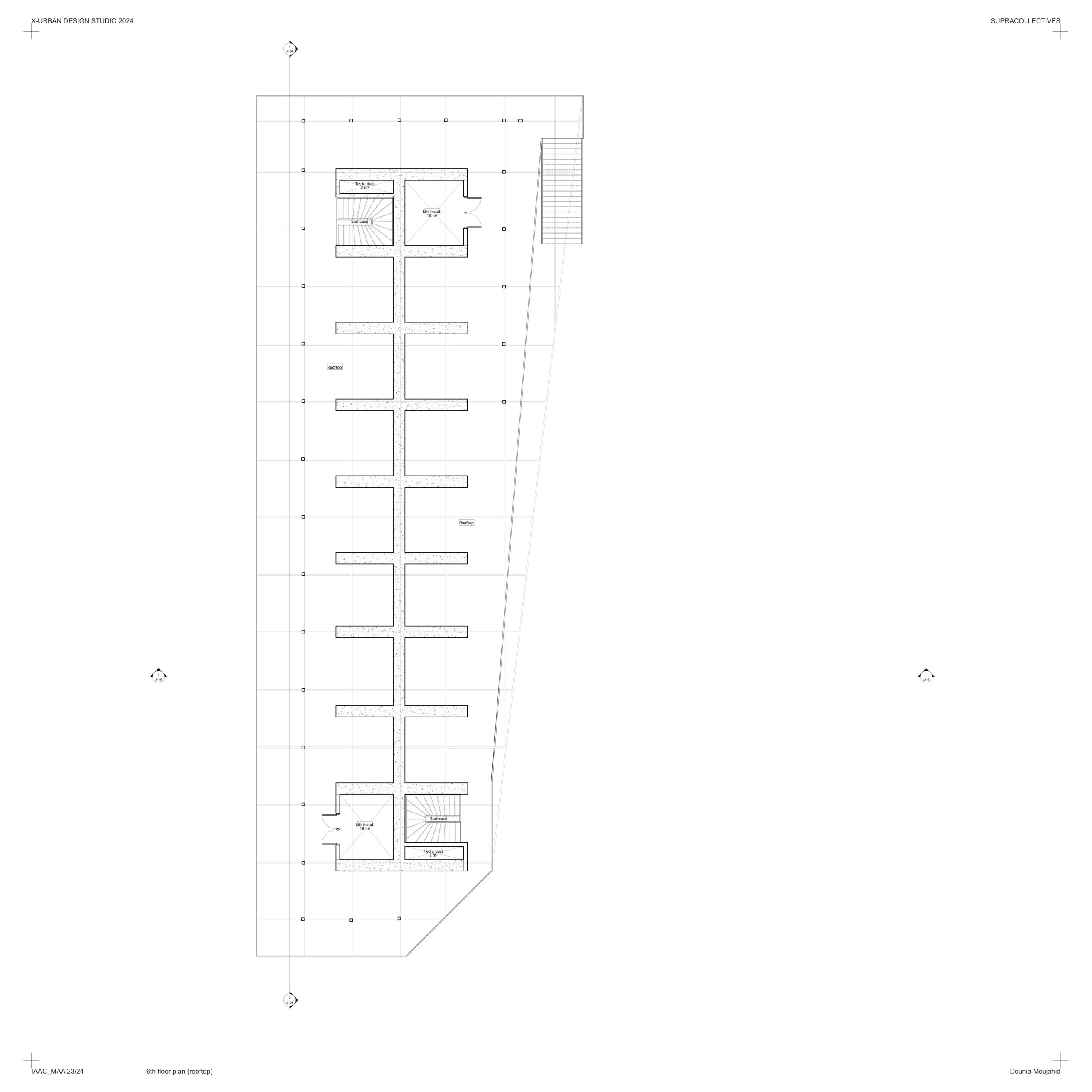
Sections
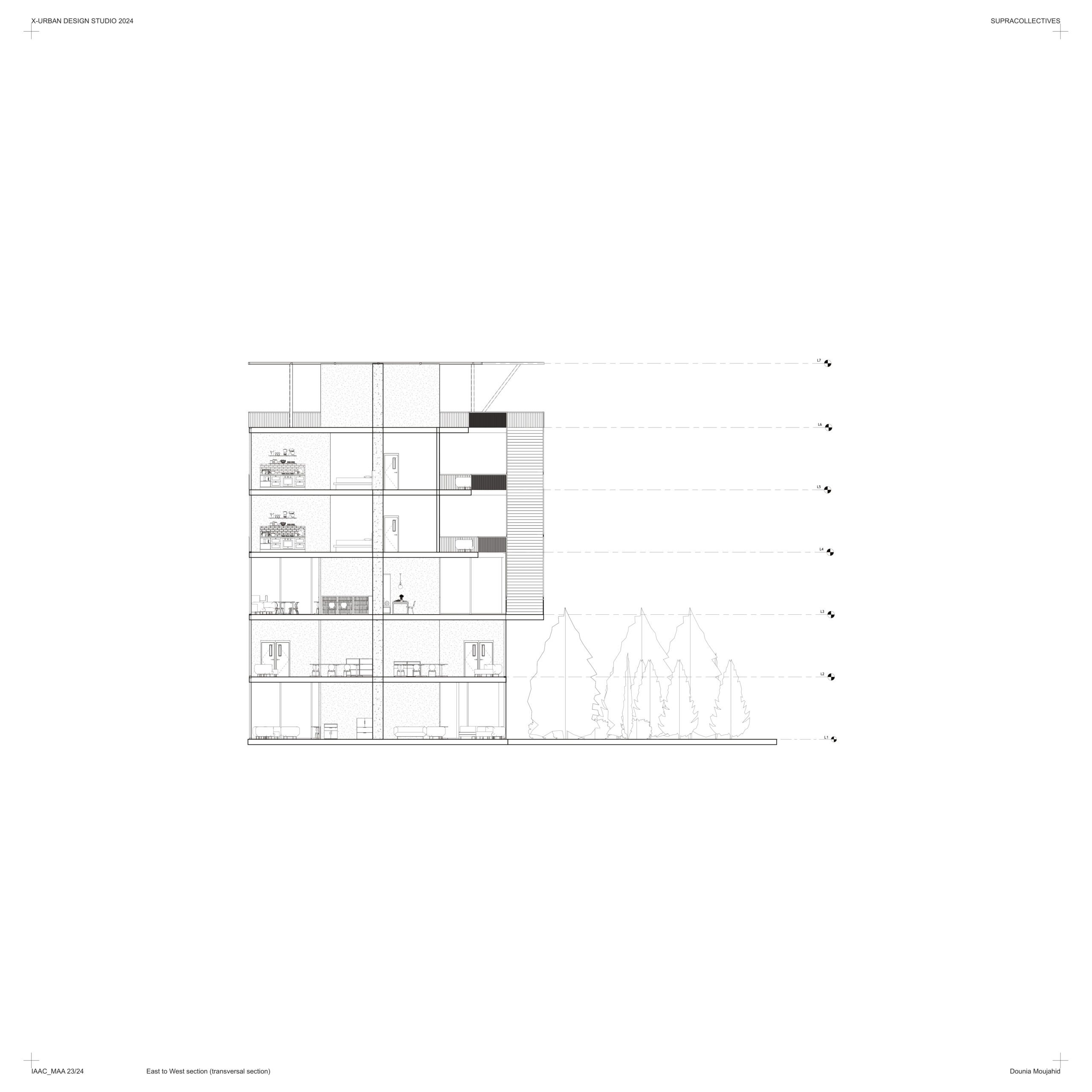
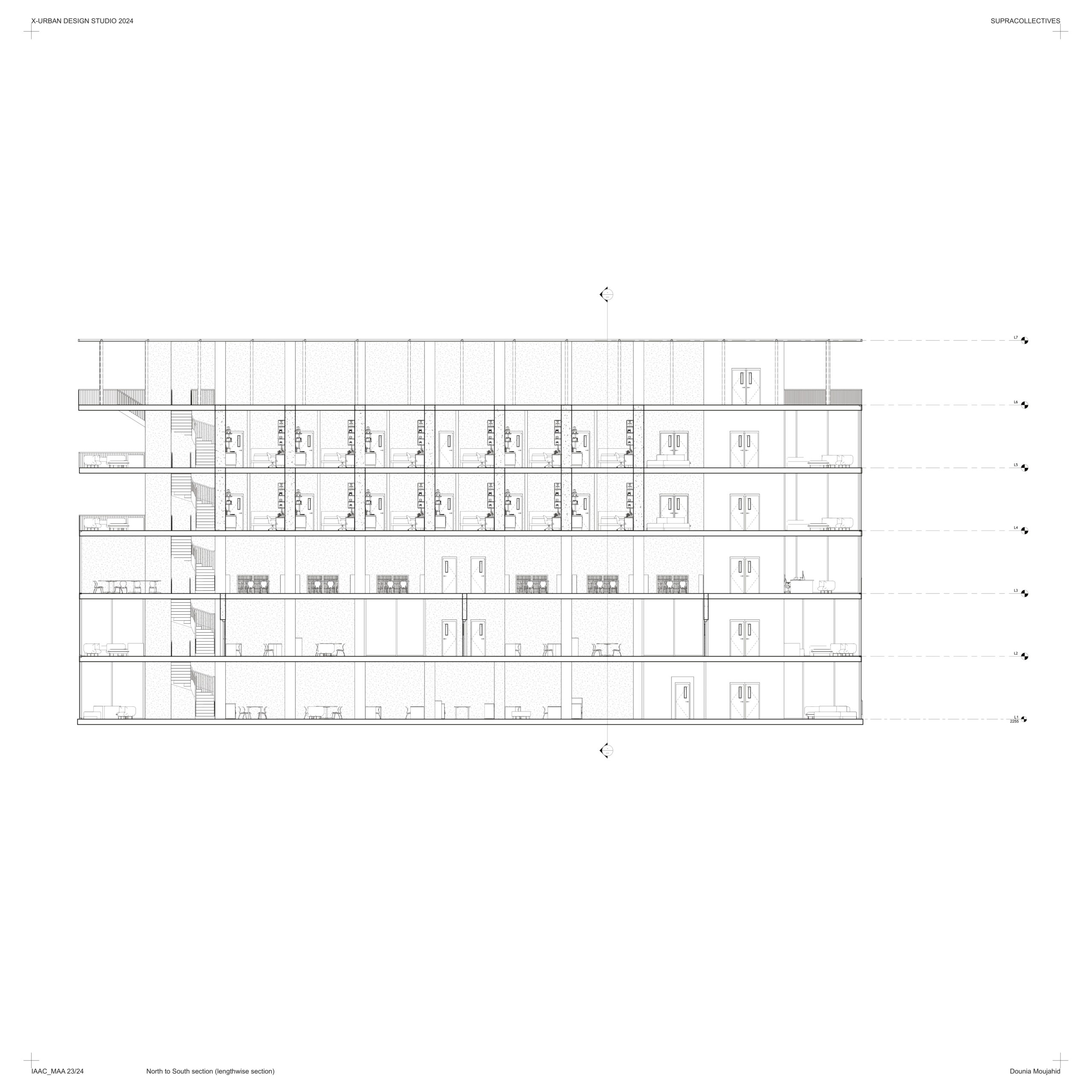
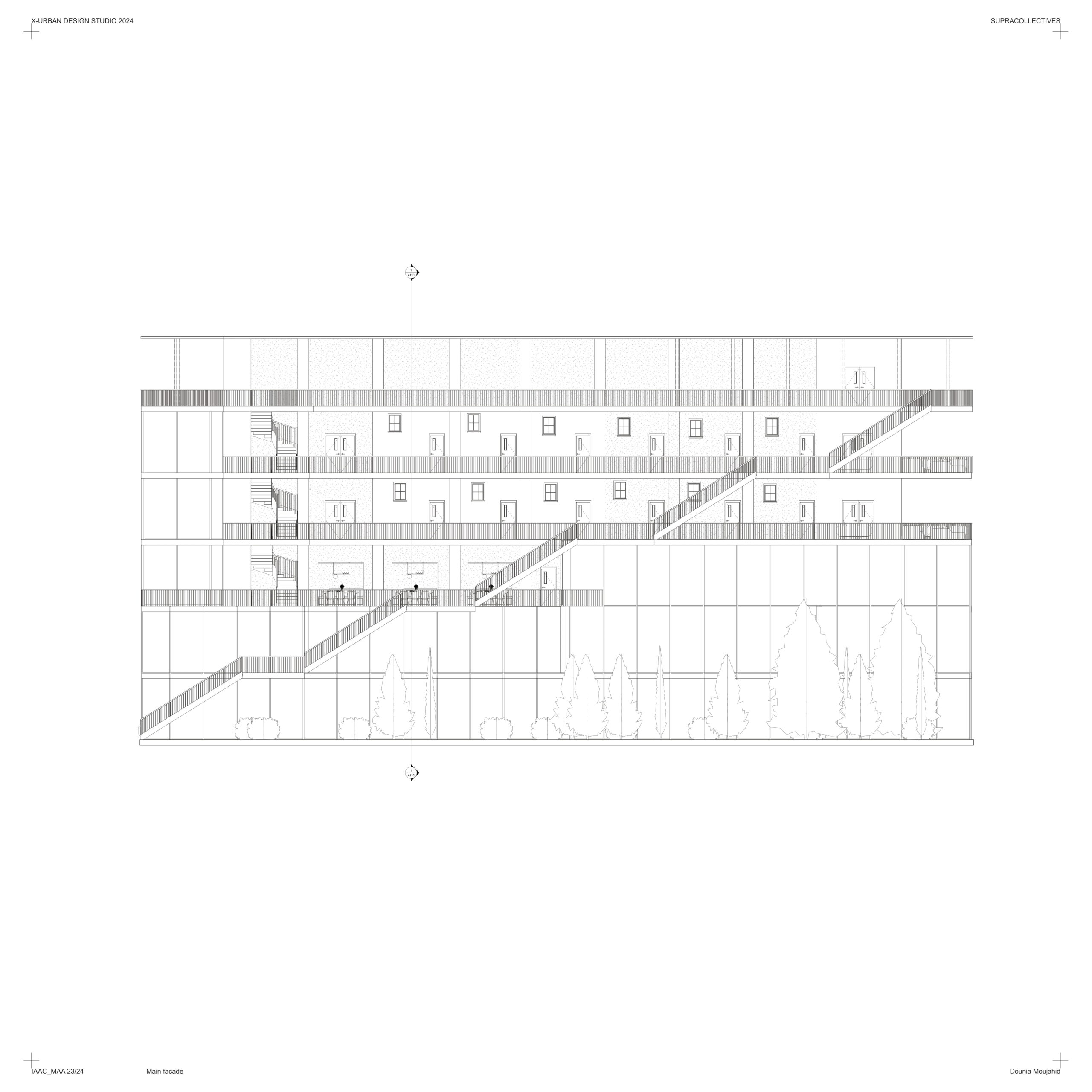
Zoom-in
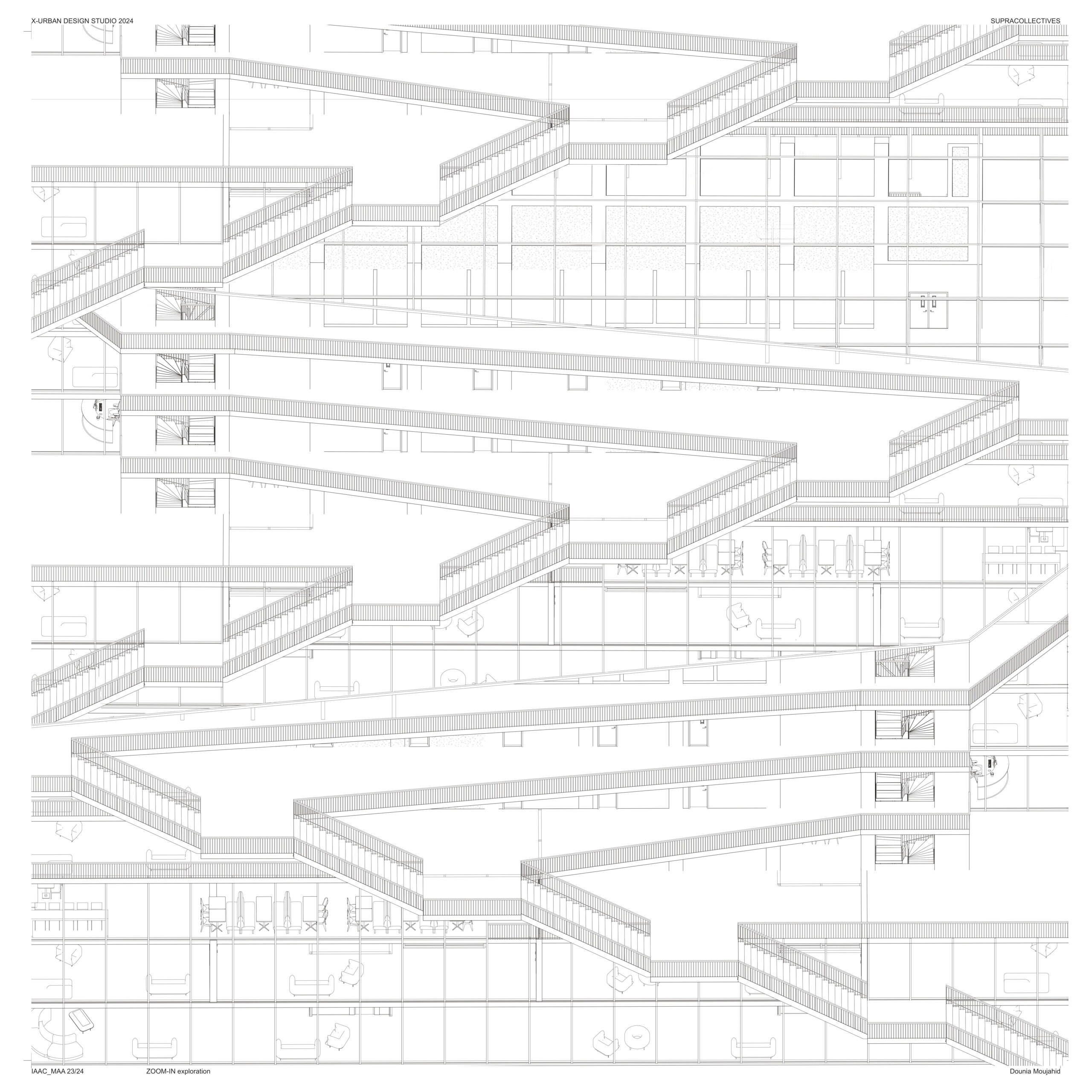
Renders
